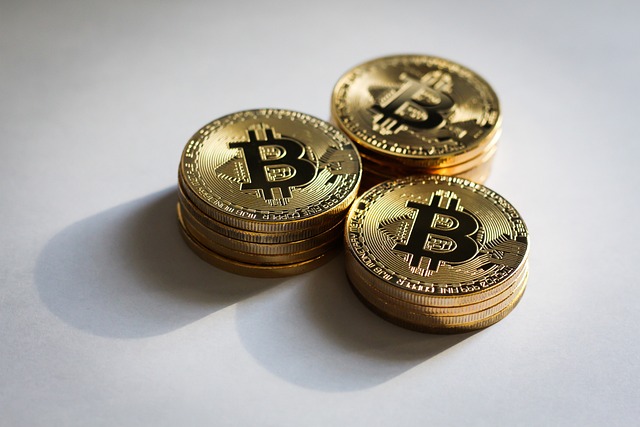The Rise of Robot Trading: A New Era in Financial Markets
Author: Jameson Richman Expert
Published On: 2024-08-25
Prepared by Jameson Richman and our team of experts with over a decade of experience in cryptocurrency and digital asset analysis. Learn more about us.
In recent years, the financial landscape has been dramatically transformed by advancements in technology. Among these developments, robot trading—also known as algorithmic trading or automated trading—has gained considerable attention from investors, firms, and market commentators alike. This article delves into the intricacies of robot trading, exploring its mechanisms, benefits, challenges, and future prospects in the realm of finance.

Understanding Robot Trading
Robot trading involves the use of algorithms and computer programs to execute trades in financial markets on behalf of investors. These algorithms can be programmed to analyze market data, identify trading opportunities based on specific criteria, and execute trades at high speeds, often in milliseconds or microseconds.
The Mechanics of Robot Trading
At the core of robot trading lies complex programming that evaluates vast amounts of market data, analyzes trends, and makes decisions based on pre-defined rules. Here are some key elements involved in the mechanics of robot trading:
- Algorithms: Algorithms are the foundation of robot trading. They’re written to spot patterns and signals within market data, helping traders identify potential buy or sell opportunities.
- Execution: Once a trade opportunity is identified, the robot executes the trade automatically, without human intervention. This rapid execution reduces latency and increases the probability of capitalizing on market movements.
- Backtesting: Before deploying a trading algorithm in live markets, extensive backtesting is conducted. This involves using historical market data to simulate how the algorithm would have performed in the past.
- Risk Management: Effective robot trading systems incorporate risk management strategies to minimize losses, often employing stop-loss orders and position sizing techniques.
Types of Robot Trading Strategies
Robot trading can encompass a myriad of strategies, tailored to various market conditions and investment goals. Some popular types include:
- High-Frequency Trading (HFT): This strategy involves executing a large number of orders at extremely high speeds, often capitalizing on minute price discrepancies across markets.
- Statistical Arbitrage: This approach exploits price inefficiencies between correlated assets, utilizing statistical models to predict price movements.
- Trend Following: Trend-following algorithms identify and ride existing market trends, buying when prices are rising and selling when they start to fall.
- Mean Reversion: This strategy asserts that asset prices will revert to their historical mean or average over time. Algorithms operating this way buy undervalued stocks and sell overvalued ones.
The Benefits of Robot Trading
As technology continues to advance, robot trading is becoming increasingly popular due to several compelling benefits:
1. Speed and Efficiency
One of the primary advantages of robot trading is its ability to execute trades at unparalleled speeds. **This is particularly important in today’s fast-paced markets, where timing can significantly impact profitability. The quicker a trade can be executed, the better the potential outcome for the investor.>**
2. Reduced Emotional Intervention
Human emotions—such as fear and greed—often cloud judgment and lead to suboptimal trading decisions. Robot trading mitigates this issue by adhering strictly to predefined trading rules. **This promotes discipline in trading, allowing for more rational and systematic decision-making. It removes emotional biases that can derail even the most skilled traders.>**
3. 24/7 Market Monitoring
Unlike human traders, robots can monitor markets around the clock, continuously analyzing data and executing trades. **This ensures that potential trading opportunities are never missed, particularly in dynamic markets that operate globally and continuously.>**
4. Portfolio Diversification
Robot trading allows investors to diversify their portfolios across a range of assets without the need for constant manual oversight. Algorithms can effectively manage multiple trades in different markets and still adhere to strategic risk management measures. **This not only spreads risk but also potentially increases returns.>**
Challenges and Risks of Robot Trading
Despite its numerous advantages, robot trading is not without challenges and risks. A comprehensive understanding of these potential pitfalls is crucial for any investor considering automated trading strategies.
1. Technical Failures
Technical glitches, software bugs, or network latency can result in significant losses. **This highlights the importance of rigorous testing and monitoring of the systems used in robot trading. A single error in coding might lead to unintended trades or missed opportunities.>**
2. Market Volatility
While algorithms are designed to operate under specific conditions, extreme market movements can render them ineffective. **This could potentially lead to massive losses if a robot continues to buy during a crashing market, assuming it's a typical trend environment.>**
3. Over-Optimization
Many traders fall into the trap of over-optimizing their algorithms based on historical data. **This may create models that perform well in past scenarios but fail in real-world trading situations due to changing market dynamics.>**
4. Regulatory Risks
The regulatory environment surrounding robot trading continues to evolve. **New regulations may limit or dictate how trading algorithms can be used, potentially affecting profitability and operational methods. Staying informed about legal and regulatory requirements is essential for traders utilizing automated systems.>**

Future Prospects of Robot Trading
As technology continues to advance, the future of robot trading appears both promising and complex. Several trends signal where the industry might be heading:
1. Advanced Machine Learning
The incorporation of machine learning AI into trading strategies can enhance the predictive capabilities of algorithms, allowing them to adapt to changing market conditions dynamically. **This advancement might significantly improve profitability and the adaptability of trading strategies. The ability of robots to learn from their past performance will be crucial in refining their approach over time.>**
2. Increased Accessibility
As robot trading becomes more mainstream, accessibility is expected to increase. New platforms will emerge that make these advanced tools available to retail investors without requiring extensive technical knowledge. **This democratization of trading technology could empower more individuals to participate in the financial markets.>**
3. Integration of Alternative Data
In the near future, trading algorithms will likely incorporate alternative data sources—such as social media sentiment, satellite imagery, and other non-traditional datasets. **This trend might enhance market analysis and provide deeper insights into potential market movements. The integration of varied data types could help algorithms make more informed trading decisions.>**
4. Greater Regulatory Oversight
With the rise in popularity of robot trading comes the possibility of increased regulatory scrutiny. Governments and financial authorities may impose stricter regulations to prevent market manipulation and ensure transparency. **While regulations can foster a safer trading environment, they may also present new challenges for those using automated systems. Understanding and adapting to these changes will be vital for future traders.>**
Conclusion: Is Robot Trading the Future?
In conclusion, robot trading represents a significant shift in how financial markets operate. While it demonstrates remarkable advantages—such as speed, efficiency, and emotional detachment—it also presents challenges that investors must navigate to ensure success. **As trading technology evolves, it is imperative for traders to remain vigilant and adaptive to new developments while maintaining a strong foundation of risk management principles. The future may indeed belong to those who harness the power of these algorithms effectively and responsibly. In a rapidly changing financial landscape, the blend of human intuition and robotic efficiency might just pave the way for a new era of trading.>**